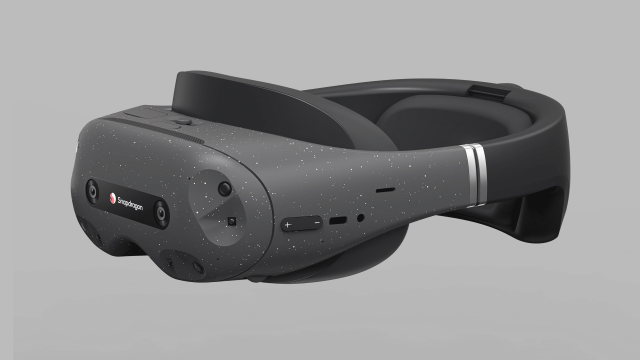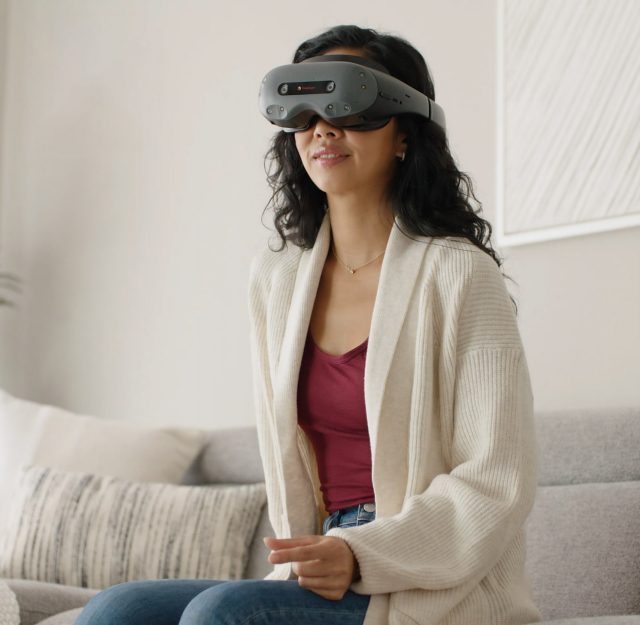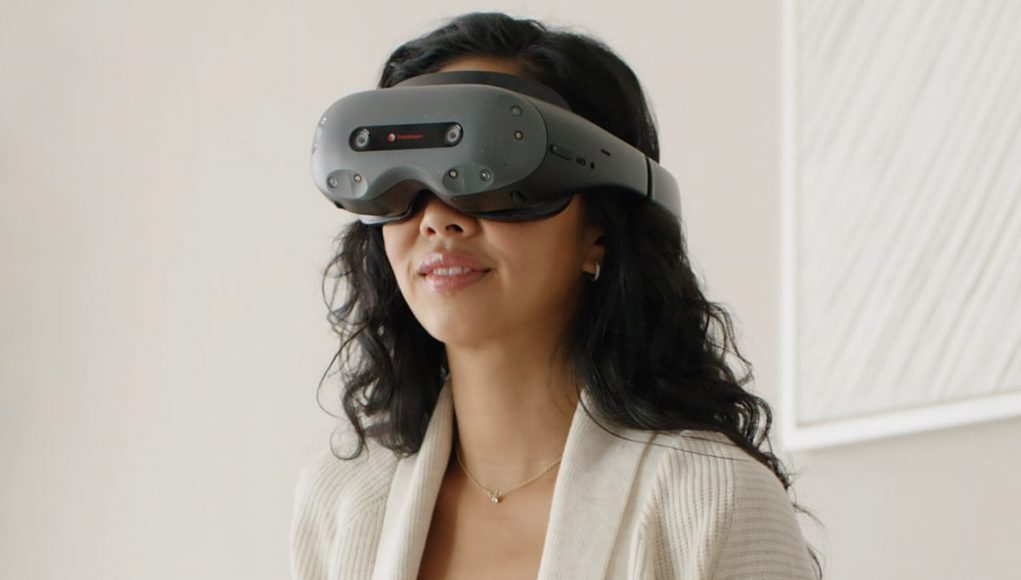Alongside the announcement of the new Snapdragon XR2+ Gen 2 chip, Qualcomm also revealed its latest reference headset, a mixed reality device that’s likely the foundation of Samsung’s upcoming headset.
Samsung announced last year that it’s working with both Google and Qualcomm on an XR device. We’ve been around the block once or twice and can tell you how these things usually go down.
Qualcomm is far and away the leading provider of processors powering XR devices today. Part of the reason why is because when the company makes a new XR chip, it makes more than just the chip.
Qualcomm also creates ‘reference headsets’, which are bare-bones but fully-functional headsets that contain their latest chip, and act as a blueprint for customers (ie: Meta, HTC, or Samsung) to use as a starting point to develop their next device.
Lo and behold, alongside the Snapdragon XR2+ Gen 2 announcement this week, Qualcomm not only confirmed that Samsung would be using the new chip but also revealed a new MR headset reference design which very likely gives us a ballpark idea of what Samsung will reveal.

Like most of Qualcomm’s reference headsets, the Snapdragon XR2+ Gen 2 reference headset is made in partnership with Goertek. And here’s what we know about it:
- Snapdragon XR2+ Gen 2 processor (obviously)
- Eye-tracking from Tobii
- Support for 18.5MP (4,300 × 4,300) per-eye resolution at 90Hz
- 12 concurrent cameras
- [Our speculation on their uses]
- 2x eye-tracking
- 2x RGB passthrough
- 4x world-tracking
- 4x depth-sensing
- [Our speculation on their uses]
- Pancake lenses
- Hardware IPD adjustment
- Microphone array
- 3.5mm headphone port
- Wi-Fi 6/6E/7
So that’s the reference headset. What can it tell us about what Samsung is likely building?
Well for one, the overall form-factor. While Samsung’s headset will have different aesthetics, the form-factor probably won’t deviate all that much. That’s because the XR2+ Gen 2 is built for a certain amount of power consumption, heat dissipation, and camera count. If Samsung was building something significantly smaller, they would likely be building with the Snapdragon AR2 platform instead, which is designed to be more power-efficient and compact.
The camera stack is likely to be similar too, considering that XR2+ Gen 2 ups the concurrent camera count to 12 (compared to 10 with the prior XR2 Gen 2).
But then there’s the parts that are usually heavily customized between the reference headset and the finished product. The first of which is the display.
While the reference headset can technically manage up to 18.5MP (4,300 × 4,300) per-eye resolution at 90Hz, our understanding is that Qualcomm’s reference headsets usually aren’t equipped with the maximum supported display (because the maximum theoretical pixel throughput usually exceeds displays that are widely available at the time).
The status quo for displays of this size currently on the market is in the 2K range. Samsung’s headset will likely land between 2K and 3K per-eye; we doubt they’ll jump all the way to 4K.
It remains to be seen if Samsung will stick with the industry-standard LCD display technology or perhaps want to leverage its own OLED display expertise. Samsung acquired a microdisplay manufacturer last year, though it isn’t clear if that was to support this specific upcoming headset or simply a strategic move anticipating future demand for such displays.
The lenses are another element that tends to differ significantly from the reference design. Recent headsets have been moving away from single-element Fresnel lenses and toward more compact pancake lenses. Samsung’s headset will likely use pancake lenses but we’ll have to wait and see if they have something as good as those in Quest 3, or if they’ll end up with something closer to the less performant lenses in Vive XR Elite.
The big question up in the air right now is whether Samsung’s headset will be positioned to compete with the likes of Meta’s Quest or Apple’s Vision Pro; our bet is on the former.

Interestingly, Qualcomm’s marketing photo shows the user with her hand in her lap doing a pinching gesture. That looks an awful lot like the look-and-tap system that Apple has shown on Vision Pro. Will this become a new standard input method?







